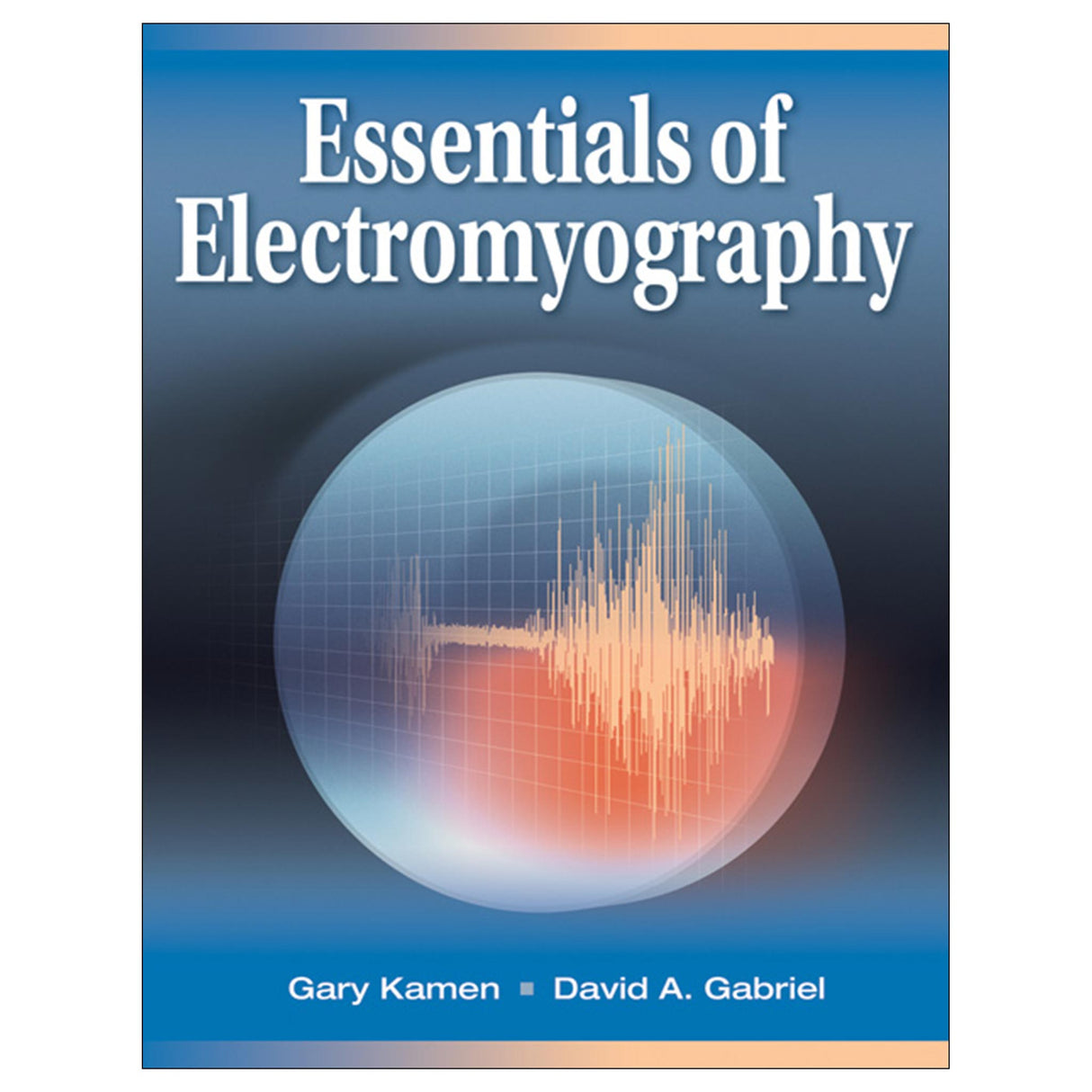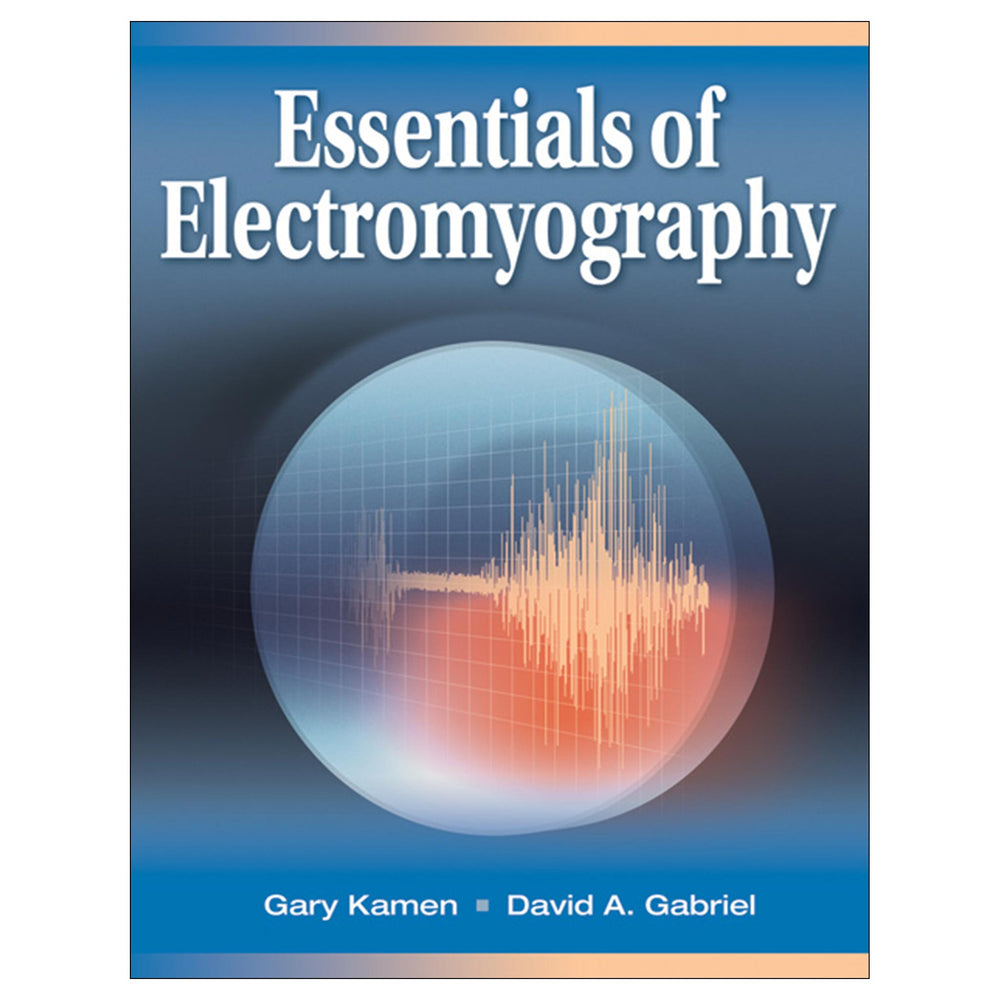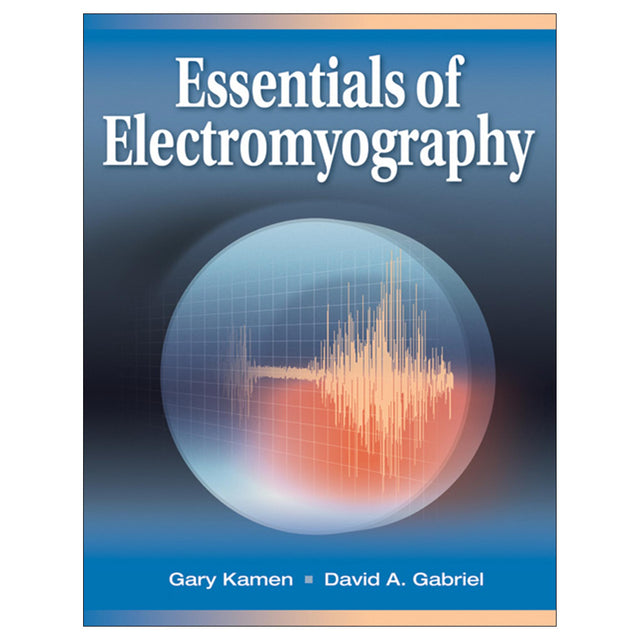Essentials of Electromyography PDF
Author: Gary Kamen, David A. Gabriel
$79.95 CAD
Access Duration: 10 Years
The interest in and use of electromyography (EMG) have grown significantly in recent years. Researchers have found numerous clinical and research uses for EMG, including biofeedback, gait analysis, and clinical diagnosis for neuromuscular disorders. Yet, until now, few sources have been available to help novices understand the characteristics of the instrumentation, signal analysis techniques, and appropriate EMG applications.
Essentials of Electromyographyprovides the perfect starting point for those who plan to use EMG because it aids in the comprehension of issues such as handling noise contamination to the area, slope, and variability of the EMG signal. The text is also a solid reference for practitioners who use EMG, including exercise scientists, physical therapists, occupational therapists, and motor development specialists.
The book contains six detailed chapters discussing the anatomy and physiology of muscle, bioelectricity, EMG tools, signal processing, force–fatigue relations, and gait. Through Essentials of Electromyography, readers will
• learn both fundamental and advanced concepts regarding the principles of using EMG, including the use and abuse of electrical recordings of muscle potentials;
• discover the physiological basis of EMG signals, which is explained at an introductory level; and
• explore relevant topics such as electrode configuration, advanced signal processing theory, and locations for extracting EMG information.
The text provides a solid review of the relationship between human anatomy and EMG as well as how EMG is applied to clinical areas. It showcases over 160 figures and many qualitative explanations to communicate the principles of EMG, the biophysical basis of EMG, and the appropriate applications of EMG. It also contains appendixes for readers with a deeper understanding of EMG and stronger backgrounds in math; those readers will have the opportunity to work through more detailed EMG calculations. The book is heavily referenced and illustrated with diagrams showing electrical circuits and the progression of electrical impulses.
Essentials of Electromyography—which is also available as an e-book—will help readers learn how to apply EMG for biofeedback, back pain, sport activities, and other uses. The text pulls together information scattered in books and articles among the numerous disciplines that use EMG as a tool. With its clear presentation of the concepts and applications of EMG, Essentials of Electromyography will prove to be a valuable text for practitioners and students alike.
Preface
Acknowledgments
Acronyms and Symbols
Chapter 1. Anatomy and Physiology of Muscle Bioelectric Signals
Anatomical Features of Muscle
Physiology of the Muscle Fiber
Resting Membrane Potentials
Generation of the Muscle Fiber Action Potential
Muscle Fiber Conduction Velocity
Motor Unit Features
Fiber Organization
Motor Unit Action Potential
Techniques for Modulating Muscular Force
Other Physiological Influences on the Electromyogram
For Further Reading
Chapter 2. Bioelectricity
Forces in Electricity
Electric Charge
Electric Fields
Electric Potential Energy
Volume-Conducted Potentials
The Far Observation Line
The Near Observation Line
Tripole Representation of the Muscle Fiber Action Potential
Essentials of Electric Circuits
Capacitance
Electric Current
Resistance
Electrical Energy
Resistors and Capacitors in a Circuit
Charging a Capacitor Through a Resistor
Discharging a Capacitor Through a Resistor
The Muscle Fiber as a Resistor-Capacitor Circuit
Essentials of Alternating Current
Conventions of an Alternating Signal
Effective Voltage and Current
Capacitance in an AC Circuit
Impedance
Cutoff Frequency for an Alternating Current Circuit
For Further Reading
Chapter 3. EMG Instrumentation
Electrodes
The Electrode-Electrolyte Interface
Half-Cell Potential
Electrode Types
Surface Electrodes
Indwelling Electrodes
Needle Electrodes
Wire Electrodes
Tissue Filtering
Electrode Configuration
Monopolar Recordings
Bipolar Recordings
Interelectrode Distance
Selectivity
Considerations for Electrode Placement
Amplifier Characteristics
Differential Gain
Input Impedance
Bias Current
Amplifier Noise
Cabling
Frequency Response
Bode Plots
Decibels
Filters
High-Pass Filter
Low-Pass Filter
Band-Pass Filter
Practical Applications
Electrode Arrays
Grounding
Safety Grounding
Signal Grounding
Computer Interfacing
Sampling
Horizontal Resolution
Multiplexing
Quantization
Vertical Resolution
For Further Reading
Chapter 4. EMG Signal Processing
Amplitude
Nature of the EMG signal
Linear Envelope Detection
Radio Signal Demodulation
Moving Average
EMG Signal Demodulation
Linear Envelope EMG Measurement
Area
Slope
Onset
Shape
Band-Passed EMG Measurement
Cross-Correlation Function
Background of the Correlation
Calculation of Cross-Correlation Function
Muscle Fiber Conduction Velocity
Electromechanical Delay
Cross-Talk
Frequency
Fourier Series
Frequency Spectrum
Power Spectrum
Fourier Transform
Frequency Spectrum of EMG
Power Spectral Density of EMG
Discrete Measures Obtained From the Power Spectral Density Function
Data Window Length
Noise Contamination
Signal-to-Noise Ratio
Inherent Noise
Electrode Noise
Amplifier Noise Sources
Interference Noise
Signal Averaging
Baseline Noise Spectrum Subtraction
ECG Contamination
Basic Concepts of Digital Filtering
Residuals Analysis
Digital Filtering
For Further Reading
Chapter 5. EMG–Force and EMG–Fatigue Relationships
Relationships Between Muscular Force and EMG
EMG Magnitude and Muscular Force
Studies Using Isometric Contractions
Studies Using Nonisometric Contractions
Studies Focusing on Other Factors
Frequency Analyses
EMG Analysis During Fatiguing Contractions
EMG Amplitude During Fatigue
Spectral Frequency Characteristics
Advanced EMG Issues During Fatiguing Contractions
M-Waves During Fatigue
The Importance of Muscle Length
Shifts In Spectral Frequency During Fatigue
Other EMG–Fatigue Reporting Techniques
Reliability of EMG Measures During Fatiguing Contractions
Other Issues and Recommendations
For Further Reading
Chapter 6. Other EMG Applications
EMG and Gait
Indwelling or Surface Electrodes?
Normalization
Appropriate Quantitative Measures
EMG Onset–Offset Analysis
Visual Presentation of EMG Data During Gait
Other Gait EMG Issues
Reliability of the EMG Signal During Gait
EMG Activation Timing
Threshold Detection
More Complex Techniques
Evoked Potentials
M-Waves
H-Reflexes
V-Waves
F-Waves
Peripheral Nerve Conduction Velocity
Other Evoked Potentials
Ballistic Movements
For Further Reading
Appendix 2.1 Calculation of Electric Fields
Appendix 2.2 Calculating the Electric Potential at a Point
Appendix 2.3 Electric Circuits
Appendix 2.4 Charging a Capacitor Through a Resistor
Appendix 2.5 The Muscle Fiber as an RC Circuit
Appendix 3.1 Muscle–Tendon End Effects
Appendix 4.1 EMG Area and Slope Measurement
Appendix 4.2Cross-Correlation Function
Appendix 4.3 Calculating Fourier Coefficients
Glossary
References
Author Index
Subject Index
About the Authors
Image bank. Features most of the figures and tables from the text, sorted by chapter. The images can be used in developing a customized presentation based on specific course requirements. A blank PowerPoint template is also provided, along with easy-to-follow instructions for quickly creating a presentation.








